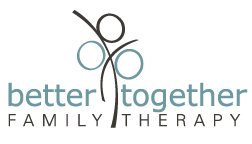Adult ADHD is a Real Thing
A Maryland therapist explains why some people miss being diagnosed as a child
Many people hear the term ADHD and imagine a child who can’t sit still, has difficulty waiting their turn, and acts impulsively. These behaviors combined with poor school performance can often lead to an early childhood diagnosis of ADHD. If that diagnosis doesn’t happen, the child grows up. And still has ADHD.
The diagnosis of ADHD (Attention Deficit Hyperactivity disorder is an umbrella diagnosis for people who have difficulty regulating their attention. In fact the name can be misleading as people with this diagnosis can often sustain their attention on things that interest them. This is known as hyperfocus and this can be frustrating to those around them.
Dr. Russ Barkely, a pioneer in ADHD research believes the diagnosis should be called “Executive Function Deficit disorder”. Since ADHD is a lifelong affliction it makes sense that some people are not being diagnosed until adulthood.
ADD or ADHD? The types of ADHD
There are three recognized types of ADHD: ADHD hyperactive-Impulsive, ADHD Inattentive, and ADHD Combined (meaning with hyperactivity-Impulsivity and inattention traits). Like other neurocognitive disorders, ADHD symptoms can vary greatly from person to person. Though adults with ADHD had ADHD as children (there’s no such thing as adult onset ADHD), many miss being diagnosed during that time.
What is adult ADHD?
Considering ADHD is lifelong and presents differently in individuals it is not uncommon for people to miss being diagnosed as children. For example a person with ADHD may do well in school, because school is interesting for them, they are able to sustain attention. The DSM V requires an adult to demonstrate impairment in at least two or more settings of a client’s life and symptoms needed to be present during childhood.
Often people who missed being diagnosed as a child were able to find strategies to cope with their symptoms. As adult life becomes more complex with responsibilities and relationships, impairments tend to become more difficult to cope with.
Signs of ADHD inattentive type may include:
Making seemingly careless mistakes at work or during other activities
Difficulty sustaining attention for long tasks such as preparing reports, completing forms, or reviewing lengthy papers
Trouble listening closely when spoken to directly (may be easily distracted)
Difficulty following instructions and finishing duties in the workplace or at home
Trouble organizing tasks and activities and managing time
difficulty breaking projects or tasks down into smaller steps, time blindness
Difficulty starting a task, even when you want to do it
Tuning out or getting frustrated with tasks that require sustained attention such as meetings, conferences, and social situations
Losing things such as keys, wallets, and phones (that may be expensive to replace)
Being easily distracted by unrelated thoughts or stimuli during conversations
Being forgetful in daily activities, such as paying bills, keeping appointments, or returning calls
Signs of ADHD hyperactive-impulsive type may include:
Experiencing extreme restlessness, difficulty sitting still for extended periods, and/or wearing others out with one’s activity
Fidgeting with or tapping hands or feet or squirming in seat, so much that it is disturbing or distracting to others
Being unable to engage quietly in leisure activities (such as watching a movie, completing and puzzle or reading)
Talking excessively
Being difficult to follow in conversations (starting in the middle of your story, changing topics quickly)
Answering questions before they are asked completely
Having difficulty waiting one’s turn, such as when waiting in line
Interrupting or intruding on others
ADHD inattentive type is the most commonly diagnosed type of adult ADHD
This makes sense. A hyperactive-impulsive child likely is easy to notice in a classroom. They probably get into trouble now and then. And adults search for an explanation. A childhood ADHD diagnosis is the result.
Women with ADHD are the most likely to go undiagnosed until adulthood
The quiet, inattentive daydreamer isn’t causing any trouble for anyone else. She may not finish her work, but it only affects her. Her classmates aren’t bothered. And parents and teachers simply tell her to try harder.
The struggles of adult ADHD
There are particular challenges that come with an adult diagnosis of ADHD. Adults are expected to be good at listening, following through, and paying their bills on time. They are expected to start tasks, whether or not they like to do them. With ADHD these things are harder. And adults with undiagnosed ADHD are often feeling guilt and shame.
Adults with ADHD are also more likely to experience challenges to their quality of life. Such as difficulty with employment, being accident prone, more likely to self-medicate with alcohol, illegal and/ or legal drugs, have comorbid mental health diagnosis,
Individuals with ADHD are more likely to experience difficulties with all types of relationships (friendships, romantic, familial, etc.) Other outcomes associated with adult ADHD include vulnerability to anxiety, mood disorders, negative habits, impaired driving safety, and even premature death from accidents.
Treatment for adult ADHD can help!
The good news is that ADHD is the most treatable mental health diagnosis. Treatment for ADHD can include psychotherapy, coaching, and medication. The proper treatment can help you discover your hidden ADHD superpowers. And begin living well with ADHD.

